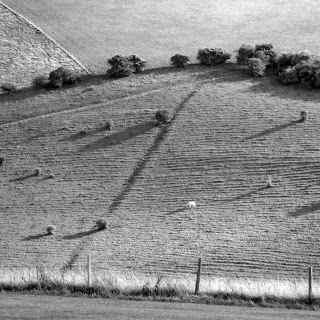I timed my evening walk perfectly tonight. The sunset was
gift-wrapped in a ribbon of flame-orange cloud which glowed parallel with the
western horizon. It wasn’t quite the flamingo hour that Virginia Woolf wrote
of, but this wasn’t smog-filled London but the comparatively clean-aired Sussex
coast. I took my usual route with the dogs: along past the paddocks of Foxhole
Farm and onto the promontory of Rookery Hill, down to the levels below and back
up through the wood towards lighted windows and home.
Perfectly I timed things. From the Foxhole paddocks I could
see a surfeit of rooks and jackdaws causing a pell-mell in the sky above
Rookery Hill. It’s a common meeting space where birds from more than one
rookery seem to assemble before dispersing to their roosts. I walked straight
into their party and they took tumbling to the sky again in a startling number –
more than I’ve seen here for a long time. Their evening wasn’t yet done and
they regrouped energetically on the meadow a little further along the hill.
Their black silhouettes in the east sky contrasted and balanced with the
flaming ribbon to the west.
Over and down Rookery Hill to the Bishopstone Road, past
lonely lights which light the road for only the occasional rambler, through the
gate and we plunged into the low meadow, wading into the gloom beneath the
trees. A silk mist was draped across the grass; above, everything was black or
a deepening blue. Further up the hill the party was in full swing: the distant
cacophony of rooks and jackdaws as they flew in wide brush strokes across the
sky. A large group of jackdaws, perhaps a hundred or more strong, played like
starlings or homing pigeons across the sky while rooks rode a fresh easterly
wind high, high up – hanging and hovering like raptors. This swinging party was
all up the far end that I would pass beneath after five or ten more minutes
walk. A small bat passed overhead, a pipistrelle of some sort; then a larger,
unknown one, too big for a pipistrelle.
They are an endless source of fascination, these rooks. Away
from the helter-skelter, at the bottom end of the wood and just above where I
stood, a quite different gathering was playing out. The skeletons of the dead
diseased elms are often empty, but occasionally their stark silhouettes hold a
few birds perching on bare branches. Tonight the lifeless, stricken body of a
dead rook was caught in the uppermost branch of one tree. It appeared to be
skewered shrike-like onto the branch, like a snagged kite, but it was more
likely that it had fallen with wings open and become snagged by the crook of
its wing around a branch. Its lifeless body flapped pathetically in the breeze it
had once commanded. A short but respectful distance away from the bird sat a
group of sullen rooks, in their usual mourning black. Two magpies passed
through close to the dead bird and one of the rooks darted at them, cawing
angrily and demanding that they keep a respectful distance. It did the same to
any other passing bird, then flew back to its perch ten metres distant. Other
rooks joined it and sat quietly. It was in complete contrast to the festivities
at the other end of the wood, which continued oblivious to this sad scene. I
swear these birds were holding a vigil. The bereaved bird kept his or her place
on the branch; others joined it, sat quietly for a while, some remained the
full while, others passed on to be replaced by new birds, well-wishers,
grief-sharers. The breeze slowed to nothing momentarily, as if the world had
paused in that space between an in-breath and out-breath, or between an
out-breath and in-breath. Slowly and respectfully, it resumed. All the time,
those few rooks sat like silent black points marking a punctuated life. I didn’t
know at that moment if I’ve ever seen such a sad sight: anguish before me
balanced by jubilation at the other end of the wood. I stood and watched in
silence with the dogs until the silhouettes melted into the night. Those few
constant birds were still there when it became too dark to discern them.
Another bat passed just above my head, now only a hint in
the darkness. A strong thirty mile breeze is forecast tonight. I wonder whether
the dead bird will take its final flight in this breeze, spiralling down
through the trees onto the leaf litter below, seen only by the fox, or whether that other bird,
its companion or mate or parent, will keep its vigil until then.
We passed silently through the calm of the low meadow and back up through the trees. In the canopy above the party was over, the birds safely tucked away in their roost with only the occasional caw from amongst the branches. The party was over for another night.



















































